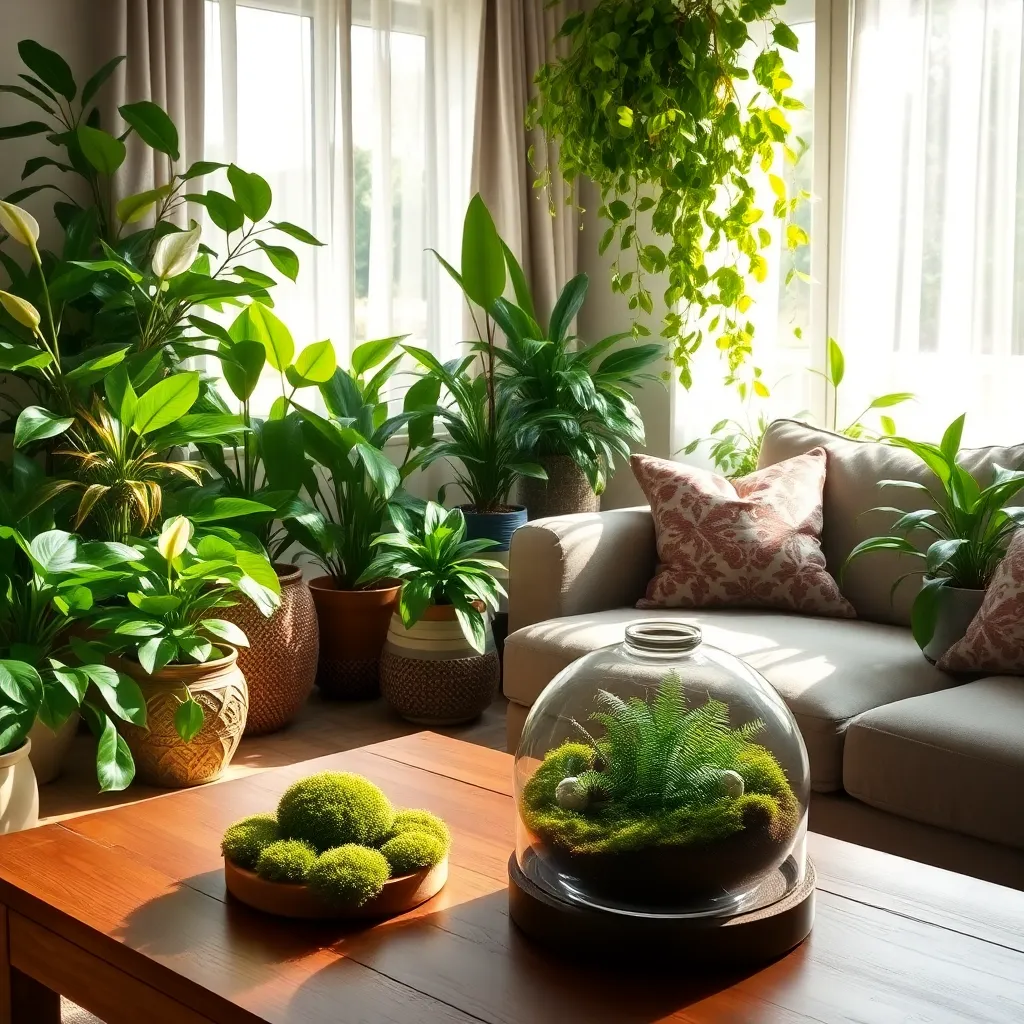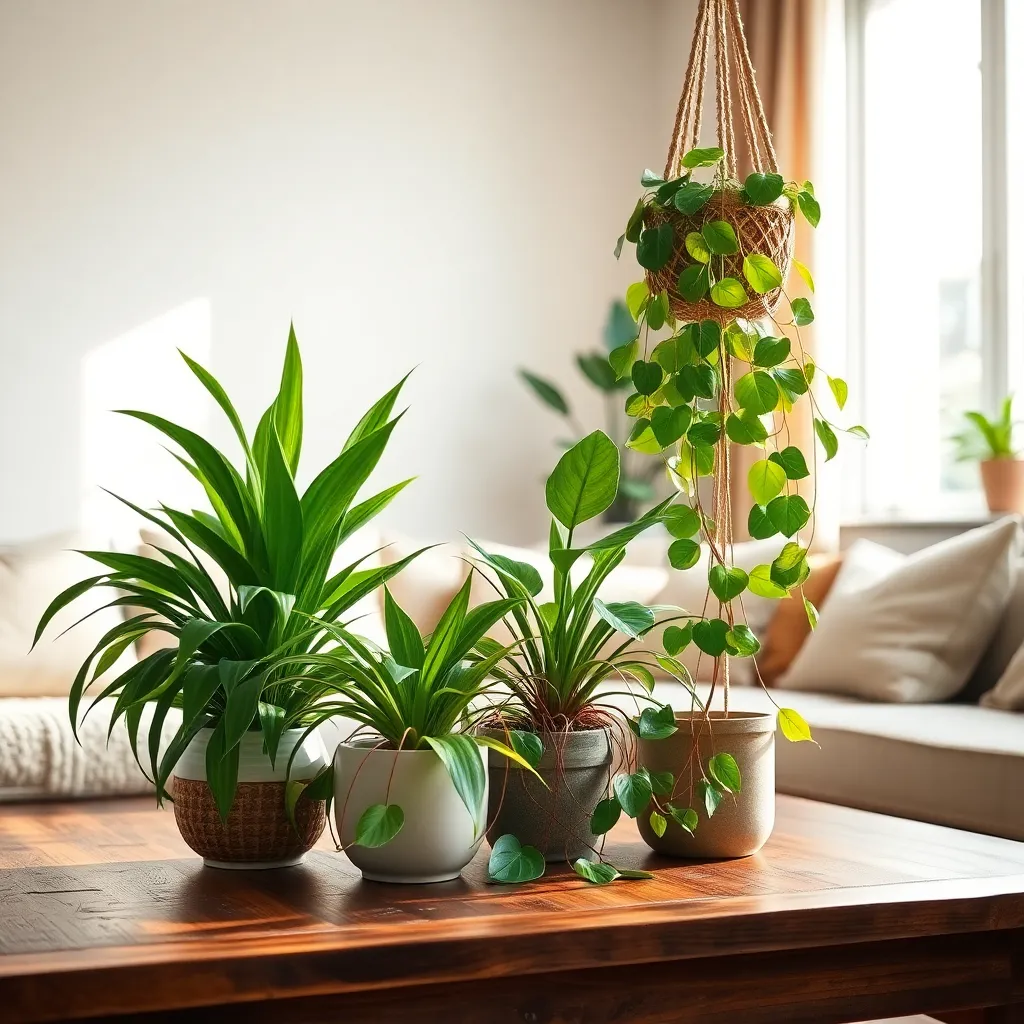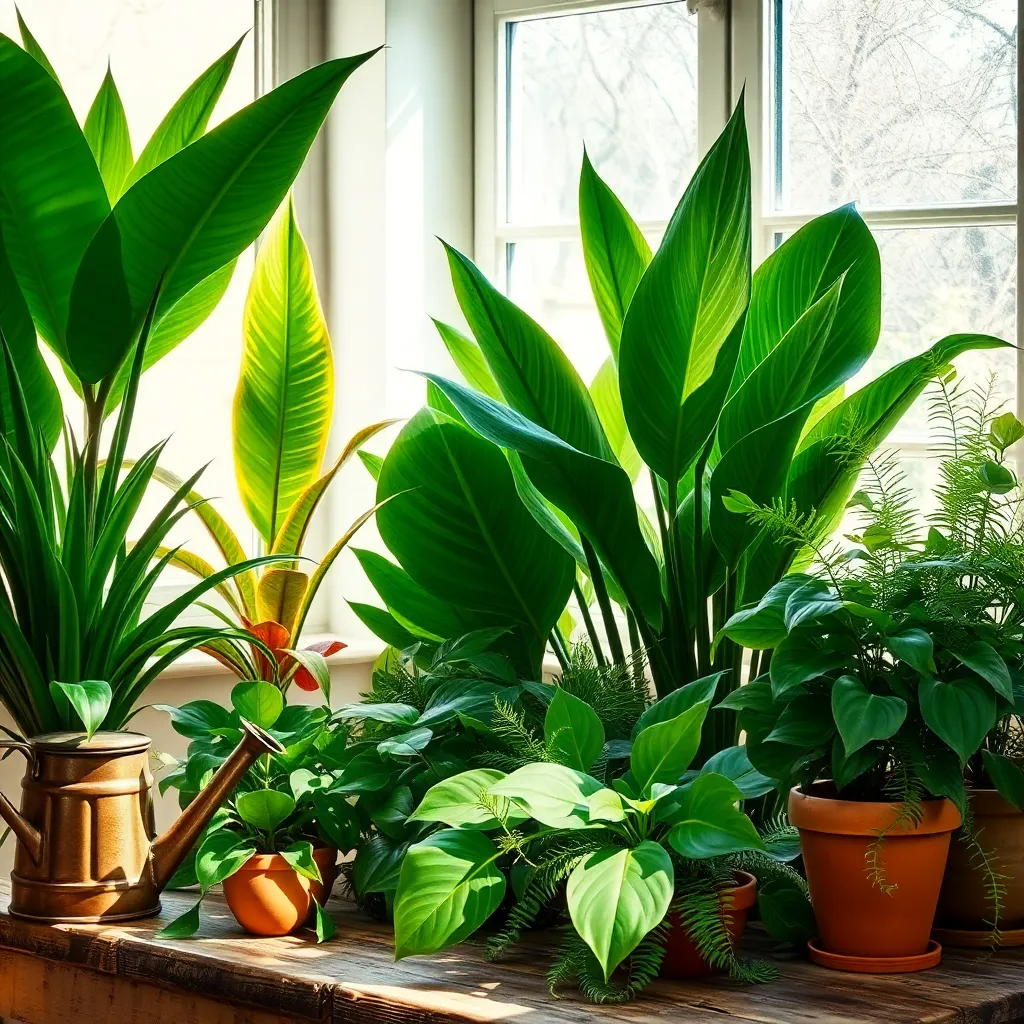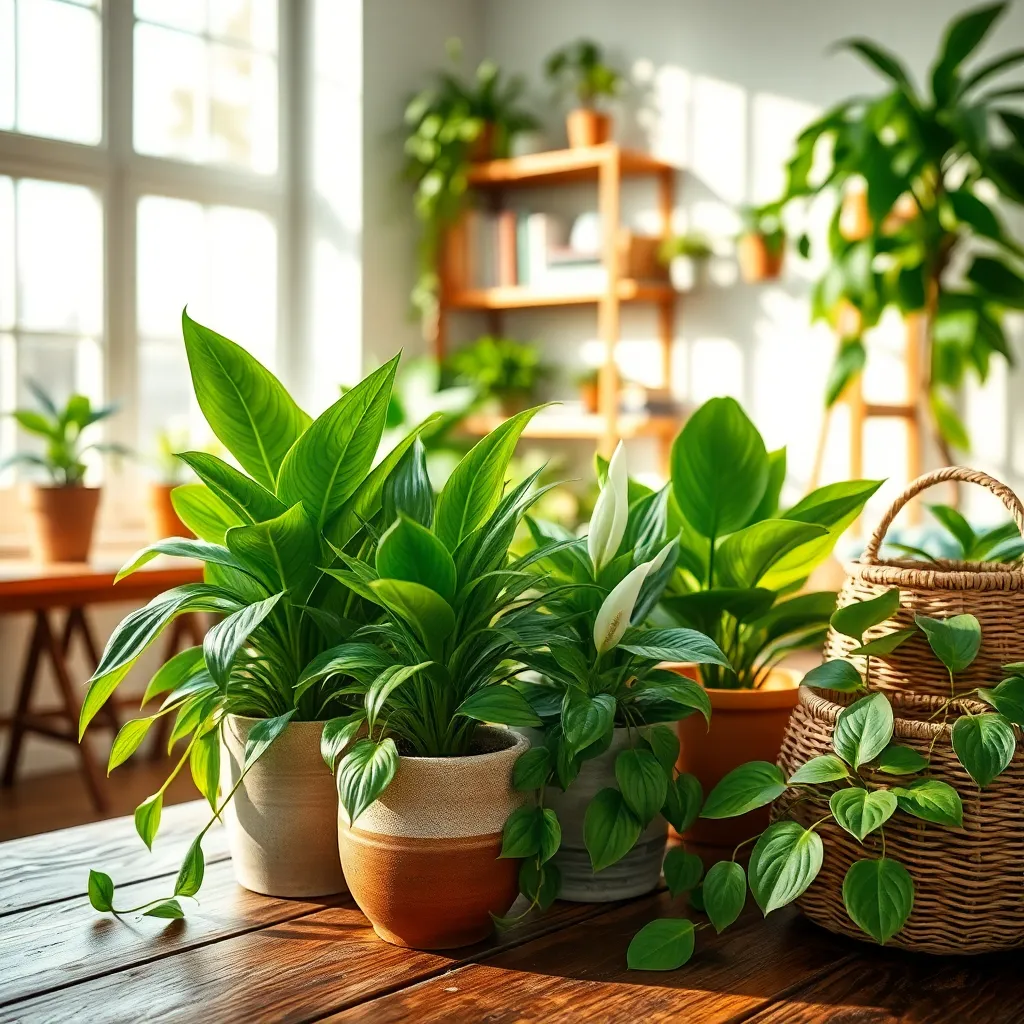Imagine transforming your home into a lush sanctuary where every breath feels like a fresh breeze in a forest. For both novice and seasoned gardeners, the idea of incorporating air-purifying plants into your living space offers an inviting blend of beauty and practicality. These green companions aren’t just decorative accents; they work tirelessly to cleanse the air, making your home healthier and more vibrant. Whether you’re just starting your gardening journey or have a collection of thriving foliage, there’s always room to explore new plant varieties that can enhance your indoor environment.
Gardening enthusiasts understand the profound impact plants can have, and air-purifying varieties are a testament to nature’s generosity. In this article, we’ll delve into a curated selection of plants renowned not only for their aesthetic appeal but also for their ability to filter out common household toxins. You’ll discover which plants are best suited for different light conditions and how to care for them, ensuring they thrive and continue to purify your space. From the resilient spider plant to the elegant peace lily, these botanical wonders are ready to weave a tapestry of wellness in your home.
As you read on, prepare to be empowered by practical tips and insights that make integrating these plants into your home a seamless experience. We aim to equip you with the knowledge to select the right plants for your specific conditions, as well as the confidence to nurture them with ease. Our journey will cover soil preferences, watering routines, and optimal placement, so you’ll feel assured in your ability to foster a flourishing indoor oasis. With a little guidance and inspiration, you’ll soon have a home that breathes with life and energy, thanks to the simple yet profound power of plants.
Benefits of Air-Purifying Plants

Air-purifying plants provide a natural way to enhance indoor air quality by filtering out harmful toxins. These plants, such as the snake plant and peace lily, are not only beautiful but also practical for maintaining a healthier home environment.
To maximize their air-purifying capabilities, place these plants in areas with good air circulation, like near windows or in the living room. Regularly wipe the leaves with a damp cloth to remove dust, ensuring that the plant can effectively absorb airborne pollutants.
Watering frequency is crucial; for instance, snake plants prefer to dry out between waterings, while peace lilies enjoy consistently moist soil. Use well-draining potting mix for both to prevent root rot, and consider adding perlite for extra aeration.
For those with more experience, experimenting with different light conditions can enhance plant growth. Snake plants thrive in both low light and bright indirect light, making them versatile options for various home settings.
Top Indoor Air-Cleaners

Many indoor plants are not only beautiful but also highly effective air-cleaners, making them a valuable addition to any home. One of the top performers in this category is the Spider Plant (Chlorophytum comosum), known for its ability to remove pollutants such as formaldehyde and xylene from the air.
Spider Plants thrive in indirect sunlight and prefer well-draining soil, making them perfect for beginners. Water them moderately, allowing the top inch of soil to dry out between waterings to avoid root rot.
Another excellent choice is the Peace Lily (Spathiphyllum spp.), which is notable for its ability to remove toxins like ammonia, benzene, and formaldehyde. This plant prefers a shaded spot and should be watered once a week, keeping the soil consistently moist but not soggy.
For those looking to add a tropical touch, the Areca Palm (Dypsis lutescens) is an effective air purifier that thrives in bright, indirect light. Ensure it is planted in a well-draining potting mix and water it frequently to maintain slightly moist soil without waterlogging.
Advanced gardeners might consider the Boston Fern (Nephrolepis exaltata), which excels at removing pollutants but requires a bit more attention. Keep this plant in high humidity areas and mist it regularly, as it prefers moist air and evenly damp soil.
Whether you are a beginner or have a green thumb, incorporating these air-purifying plants into your home will not only enhance your decor but also improve your indoor air quality. With the right care and attention, these plants will thrive and continue to purify your space effectively.
Choosing the Best Plants

When selecting air-purifying plants for your home, it’s important to consider the specific conditions of your indoor environment. Light levels, temperature, and humidity are key factors that will influence your plant’s health and air-purifying efficiency.
Start by evaluating the light availability in different areas of your home. Many air-purifying plants, such as snake plants and peace lilies, thrive in low to medium light conditions, making them ideal for rooms with less natural light.
For beginners, easy-care plants like the pothos and spider plant are excellent choices. These plants are forgiving and can tolerate a wide range of conditions, including occasional neglect, while still improving air quality.
More experienced gardeners might consider adding a Boston fern or bamboo palm to their collection. These plants require more specific care, such as higher humidity levels, but reward you with lush foliage and effective air purification.
Ensure your air-purifying plants are potted in well-draining soil to prevent root rot. A mix of peat moss and perlite or sand is ideal for most indoor plants, ensuring they receive adequate moisture without becoming waterlogged.
Regular watering is essential, but it’s important not to overwater. Let the top inch of soil dry out between waterings to maintain optimal health for plants like the aloe vera and rubber plant.
Advanced gardeners can experiment with grouping plants to create a mini indoor ecosystem. This technique can enhance humidity and create microhabitats that support plant health and air-purifying capabilities.
Care Tips for Longevity

Ensuring the longevity of your air-purifying plants begins with understanding their specific needs. Start by selecting the right location in your home, as most of these plants thrive in indirect sunlight and can suffer in overly bright or dark conditions.
Watering practices are crucial for maintaining healthy indoor plants. Many air-purifying plants, like the peace lily, prefer to be kept slightly moist, so water them when the top inch of soil feels dry.
To promote growth and longevity, use a well-draining potting mix. A combination of peat moss, perlite, and pine bark is ideal for providing the necessary nutrients and aeration.
Repotting your plants every couple of years can help them thrive. When repotting, choose a container that is only one to two inches larger in diameter to prevent waterlogging and root rot.
Fertilizing is another essential step in ensuring your plants live long and healthy lives. Use a balanced, water-soluble fertilizer every four to six weeks during the growing season to provide the nutrients they need.
Advanced gardeners might consider misting plants like ferns to maintain the humidity levels they require. This simple technique can be done as often as daily, especially in dry climates or during winter months when indoor air is particularly dry.
Arranging Plants for Maximum Effect

Arranging your air-purifying plants effectively can significantly enhance both their visual impact and air-cleaning efficiency. Start by identifying the light conditions in each area of your home, as this will dictate which plants will thrive in specific spots.
Group plants with similar light and water needs to streamline care and ensure each plant receives optimal conditions. For example, place snake plants and pothos in areas with indirect light, while peace lilies thrive in lower light spots.
Consider varying the height and texture of your plants to create visual interest in your arrangements. Use plant stands or hanging planters to elevate smaller plants like spider plants, allowing them to cascade elegantly and fill vertical space.
For a cohesive look, choose pots and planters that complement your home’s decor. Neutral tones or natural materials like terracotta can provide a timeless appeal and ensure the focus remains on your lush green plants.
Conclusion: Growing Success with These Plants
In exploring the symbiotic relationship between air-purifying plants and a harmonious home, we’ve uncovered five key concepts essential for nurturing both your living space and personal connections. First, the importance of creating a healthy environment parallels the need for emotional well-being in relationships. Second, just as plants require light, relationships thrive on open communication. Third, the diversity of plants mirrors the uniqueness of each relationship, highlighting the need for personalized care. Fourth, consistent nurturing of your plants mirrors the regular effort required to maintain strong connections. Finally, the resilience of plants reminds us that relationships, too, can flourish even after facing challenges.
As an immediate next step, choose one plant to bring into your home, symbolizing your commitment to cultivating both your environment and your relationships. Let this gesture be a reminder of the continuous growth you’re fostering.
Don’t forget to save or bookmark this article for future reference, ensuring you have a handy guide to revisit these insights. Embrace the journey of relationship success, knowing that each thoughtful action today leads to a more enriching tomorrow. Together, let’s cultivate spaces and connections that inspire and endure.

